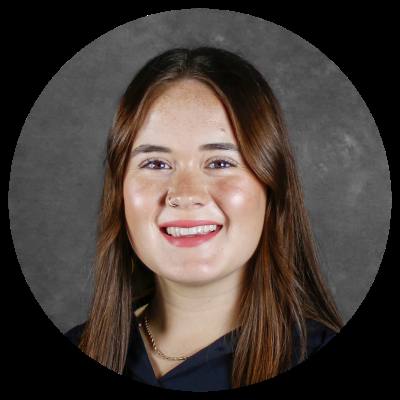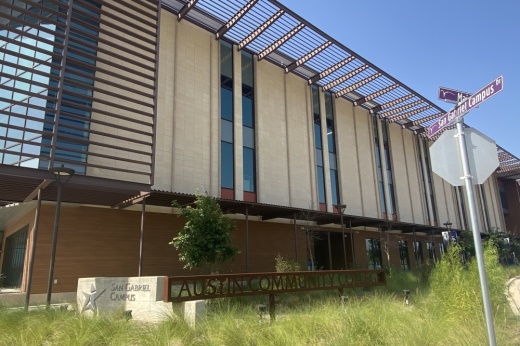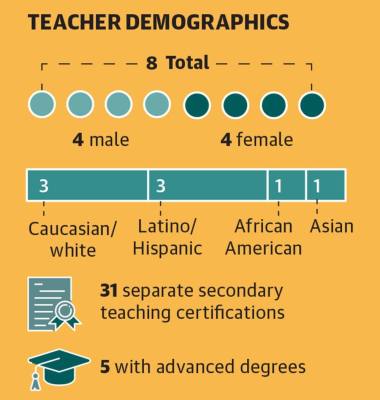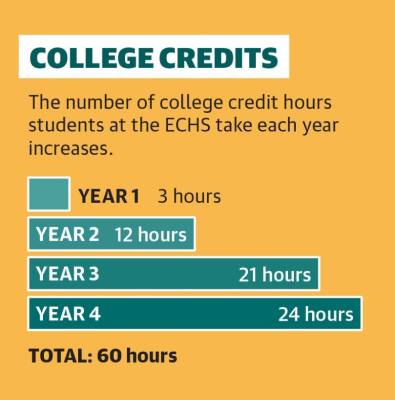The Early College High School, located at the ACC San Gabriel Campus in Leander, will welcome its inaugural class of incoming ninth graders Aug. 17.
ECHS Principal Clay Currier, who also serves as the principal for LISD’s New Hope High School and Virtual Learning Academy, has helped envision the design and logistics of the district’s first ECHS.
“They are going to be able to go out in the community and be leaders,” he said. “When we talk about the families that will be impacted by this, this is going to move mountains inside of our community.”
Creating opportunities
Planning for the ECHS began during the 2019-20 school year, but it was put on hold because of the coronavirus pandemic, ECHS Assistant Principal Kimberly Payne said. In January, the LISD board of trustees unanimously approved the final step in creating the school, and applications for incoming ninth graders opened in February.
Students were selected through a blind weighted lottery system that gave an additional entry to target populations—such as those who are economically disadvantaged, African American, Hispanic, male and first-generation students, Currier said. According to the Texas Education Agency’s ECHS blueprint, these schools must enroll subpopulations of at-risk students and those who have been historically underrepresented in higher education.
“The goal of an early college high school is to provide these educational opportunities to students that may not typically have access to it,” Currier said.
Of the 158 students that applied, 115 will make up the first cohort at ECHS, known as the Legacy Class, Payne said. Andrea Kay’s son, Christopher, will be one of those students.
“My expectation is that he is going to ... learn more than he otherwise would in traditional school and to have experiences that are going to make it easier for him to decide what he wants to do afterwards,” Kay said.
When Kay’s older son was in high school, she said navigating Advanced Placement and dual-credit options was difficult and confusing. Kay said she believes the ECHS model makes earning college credit a simpler process for both students and parents.
“I’m just so, so, so lucky that this happened at the right time for my kid, because this is the perfect situation for him,” Kay said.
Program expectations
Throughout their four years in the program, students will earn a high school diploma with honors and an associate of arts degree in general studies in art from ACC free of charge, taking around 20 college classes totaling 60 hours, Payne said.
During the spring semester of their freshman year, students will take their first college course, EDUC 1300, which teaches strategies for college success and is required for all new ACC students, Payne said.
“As a teacher, we expect students to have certain skills, but nobody ever actually teaches students how to do those things, and so the 1300 curriculum is basically based around how to take proper notes and how to study and how to form study groups,” ECHS teacher Nick Starkweather said.
As the program advances, students will take on a fuller college course load, following a specific course sequence with flexibility for college electives, Currier said.
Students will spend the entire school day at the ACC San Gabriel Campus, as the third floor of the campus will be reserved specifically for the ECHS students, Currier said. Payne said as many ACC students have elected to take virtual classes, the San Gabriel Campus had additional space.
“It was a marriage of mutual interests,” Currier said. “We have a school we want to start. Our kids will be taking their classes. They had the space.”
The district has hired eight teachers for the 2022-23 school year, five of whom are new to LISD. As LISD staff, all teachers will be able to teach high school courses but must become an adjunct professor with ACC to teach college courses.
This school year, Starkweather will serve as the school’s only adjunct professor with ACC, teaching EDUC 1300. As students will take more college classes each year, four of the new teachers have the necessary academic credentials to become an adjunct with ACC in the future, Payne said.
“Dr. Currier and Kimberly [Payne] ... seem like they have a really good vision and understanding of what early colleges should be and ... how they should function,” Starkweather said. “I hope that we set a new standard in Texas.”
‘Student-built, student-run’
As the incoming class has no racial majority, speaks seven different languages and is 16% first-generation college students, Currier said the school was intentional in hiring staff that represented the student body.
“Every single student needs to have their person on campus,” Currier said. “I cannot overstate how intentional we were in ensuring that we had diversity of experience within our staff.”
With a target seat count of 125 students per cohort, Currier said the school was designed to be small so students have individualized support. Tutorials will be built into class time, offered in multiple languages and available at any ACC campus.
“We have the ability to be able to serve students with their specific needs and meet them right where they are,” Payne said.
From ninth to 12th grade, students will also take Advancement Via Individual Determination, or AVID, classes to prepare them for college and careers, Payne said. Students will prepare for entrance exams, create resumes and tour colleges.
While the school will not offer traditional extracurriculars such as sports or band, students will be able to create and lead their own clubs. Payne said a student survey from July indicated interest in tech clubs, such as programming and app design, fine arts and student leadership.
One of the clubs will be a school design committee that will help select a school motto and mascot.
“I want this to be a student-built, student-run school,” Currier said.









